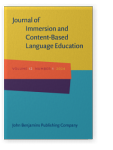Vol. 12:1 (2024) ► pp.25–48
Vol. 12:1 (2024) ► pp.25–48
“Fingers which mean นิ้ว นิ้วแบบนิ้วมือ”
Pre-service EFL teachers’ translanguaging beliefs and practices in Thai language-driven CLIL classrooms
This article explores pre-service teachers’ L1 use in Thai Content and Language Integrated Learning (CLIL) secondary classrooms through the translanguaging frame, which emphasises the use of the whole linguistic and semiotic repertoire in the classroom to make meaning and construct new knowledge. Teachers may choose to make deliberate use of learners’ linguistic repertoires in classroom activities to enhance understanding and develop learners’ communicative abilities beyond narrowly defined language codes. We investigate how pre-service English as a Foreign Language (EFL) teachers employed a translanguaging approach to model tasks and provide definitions of key terms. We explore the teachers’ beliefs concerning L1 use, drawing attention to the apparent tension between teachers’ practices and beliefs. The findings indicate that the teachers utilised translanguaging in different modes, including modeling tasks and translating L2 terms, to address students’ comprehension problems. However, the teachers expressed mixed beliefs concerning how and when L1 should be used.
Article outline
- 1.Introduction
- 2.The role of L1 in CLIL
- 3.Teachers’ beliefs regarding the use of L1 in CLIL
- 4.Methodology
- 5.Findings
- 5.1Modeling tasks
- 5.2Translation of subject-specific terms or concepts into L1
- 6.Discussion
- 6.1The roles of translanguaging in language-driven CLIL lesson delivery
- 6.2Tensions between teachers’ practice and beliefs
- 7.Conclusion and implications
-
References
